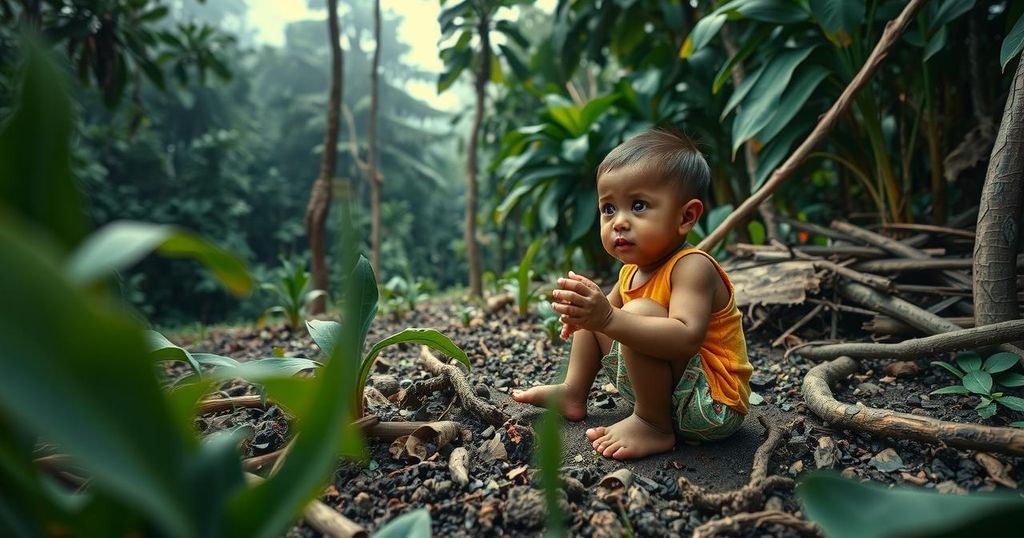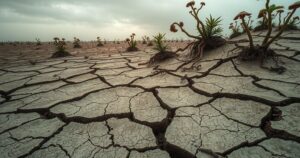Over 420,000 Children Affected by Drought in the Amazon, Warns UN

The UN reports that over 420,000 children in the Amazon basin are affected by severe drought across Brazil, Colombia, and Peru, prompting UNICEF to call for increased climate financing. The drought has closed schools and clinics and significantly impacted local communities reliant on waterways. Experts link this crisis to the El Niño phenomenon, as efforts to curtail deforestation show promise in addressing climate change.
The United Nations (UN) has reported that more than 420,000 children in the Amazon basin are suffering from severe water shortages and unprecedented drought conditions across Brazil, Colombia, and Peru. This crisis, which began last year, has particularly impacted Indigenous communities reliant on waterways for transportation and sustenance. UNICEF Executive Director Catherine Russell emphasized the urgent need for enhanced climate financing for these vulnerable populations at the upcoming COP29 climate change summit in Azerbaijan. The drought has disrupted essential services, leading to the closure of over 1,700 schools and 760 medical clinics in Brazil’s Amazon region due to depleted river levels. In Colombia, the lack of water and food has forced 130 schools to suspend classes, and more than 50 clinics have become inaccessible in Peru. With food insecurity escalating, the risk of child malnutrition rises, further compounding health risks due to inadequate access to clean drinking water. UNICEF has appealed for $10 million to assist affected communities by providing essential resources and health services. According to reports from NASA and the European Union’s Copernicus Climate Change Service, the ongoing drought is tied to the El Niño phenomenon affecting rainfall patterns. It has aggravated forest fires and worsened hydroelectric power shortages across the region. While environmental conditions remain dire, Brazilian Environment Minister Marina Silva has expressed optimism, noting a 30 percent reduction in deforestation over the past year, an indicator of potential recovery efforts. Silva highlighted the importance of governmental action in combating climate challenges and preserving the health of the Amazon, which is vital for both local and global ecosystems.
The article addresses the significant humanitarian crisis resulting from an unprecedented drought affecting the Amazon region, particularly impacting children. The situation is compounded by environmental factors associated with climate change, notably the El Niño phenomenon, which has disrupted rainfall and contributed to declining water levels in rivers critical for local communities. The UN and UNICEF are advocating for international attention and financial support to mitigate the adverse effects of this environmental disaster and safeguard child welfare.
In summary, the current drought in the Amazon region poses a severe threat to over 420,000 children, jeopardizing their access to essential resources such as food, clean water, and healthcare. The ongoing climate changes exacerbated by El Niño demand urgent global action and funding to assist the affected populations. With positive signs of reduced deforestation in Brazil and Colombia, there remains hope for collaborative efforts to address the climate crisis while prioritizing the welfare of the most vulnerable individuals.
Original Source: www.aljazeera.com





